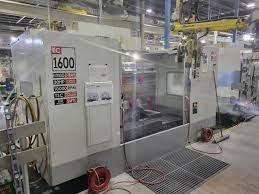A shop owner needs to understand the benefits of a horizontal machining center (HMC) before making a purchase. Adding one to your workflow improves efficiency, but the machine comes with additional expenses.
For example, a vertical machine requires complex chip management systems to keep holes and pockets clear of debris. A horizontal can rotate a part to let gravity evacuate chips, cutting setup time by 85%.
Cost-Effectiveness
When a shop purchases an HMC, it can produce the same part in one machine run as three VMCs without losing any profit margin. That gives it a lot more flexibility to bid on new work and win business, and it also frees up machine time to handle other jobs.
An additional benefit of an HMC is that it uses less operator intervention, which reduces the chance for quality problems resulting from part handling. Many shops that add an HMC claim to be able to quote 25% lower prices than they did when they operated only VMCs. Moreover, HMCs typically have larger tool magazines than VMCs, reducing setup and changeover times. That gives shops more opportunity to operate unattended during breaks, lunch and into the evening. In addition, a horizontal’s B axis can pivot the workpiece to reach different faces in a single cycle. That, along with gravity helping chip evacuation, enables better surface finish and tool life on the workpiece.
Versatility
When a shop needs to increase capacity, cut cycle times, or work with larger, prismatic parts, a quality horizontal machine is a solid option. “Anything that takes multiple setups should be considered a candidate for an HMC,” says Methods' Meier.
Compared with vertical machines, which must continually fire air or coolant into deep cavities to clear chips, horizontal machining centers allow the chips to fall naturally off the workpiece. This speeds chip removal and cuts down on the need for complex, time-consuming tool management systems. The design of many HMCs also facilitates on-machine deburring. The toolholders can carry extra deburring tools to keep them on hand and ready to use at a moment’s notice, which eliminates the need for manual or off-machine deburring. Additionally, HMCs often include large tool capacities that let shops run two or more jobs simultaneously. This reduces downtime and increases overall machine ultilization. This can also cut machining costs by allowing the same machine to serve two or more customers in one shift.
High-Speed Machining
In addition to being more cost-efficient than vertical machines, HMCs can cut parts at high speeds. That makes them ideal for the machining of complex shapes, such as those found in automotive parts. Get to know about this electric motors for sale in the link.
HMCs also come equipped with more tools than VMCs, allowing for shorter cycle times and less downtime for changing jobs. Most also feature a pallet changer, which reduces part handling. He estimates his HMC can do the work of three VMCs. He says this translates to fewer operators, which lowers operating costs even more. The reduced labor cost and faster cycle times help him win more business. The company makes precision mass flow instruments that are used in a wide range of applications, including chemical processing, pharmaceuticals and aerospace.


